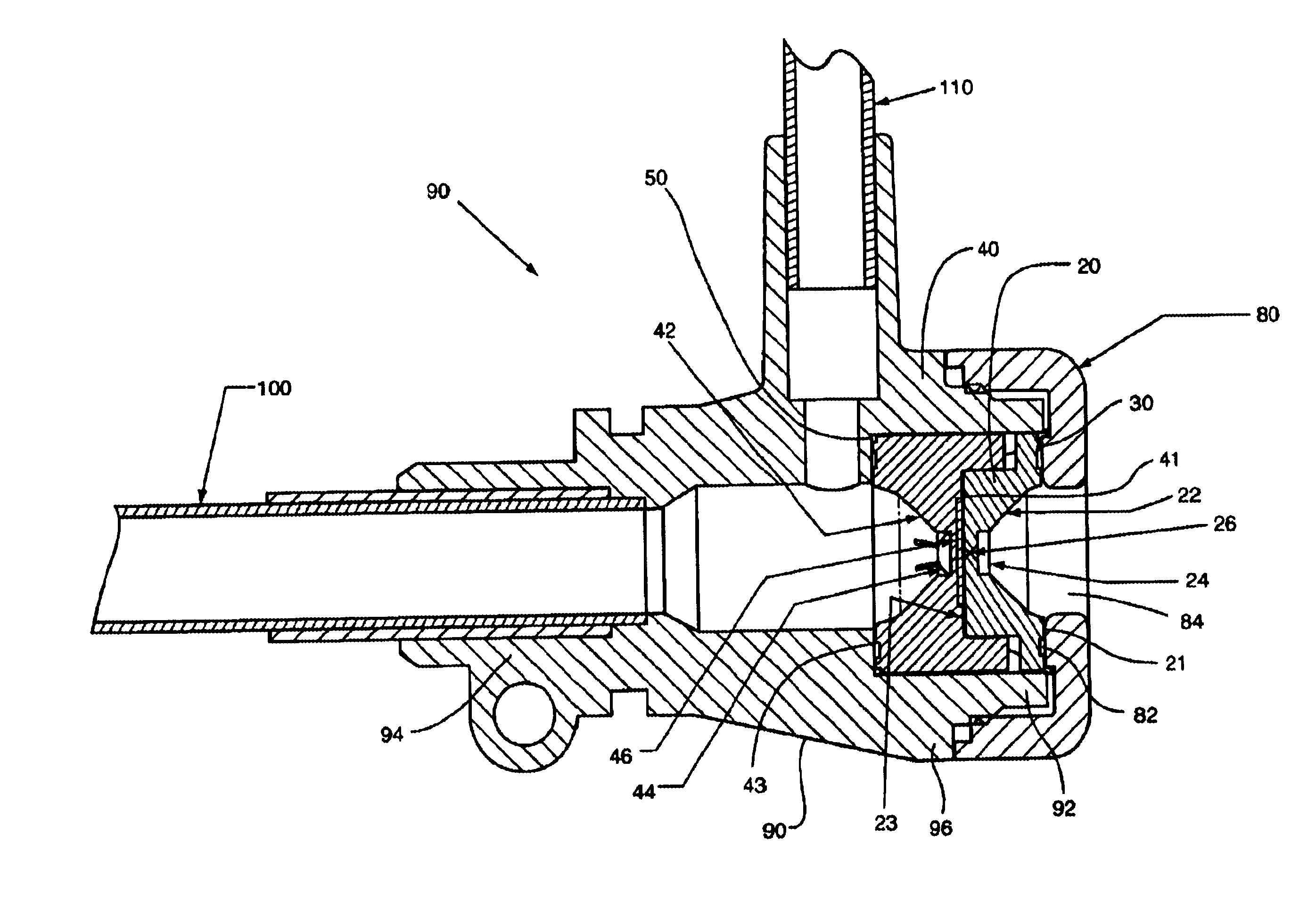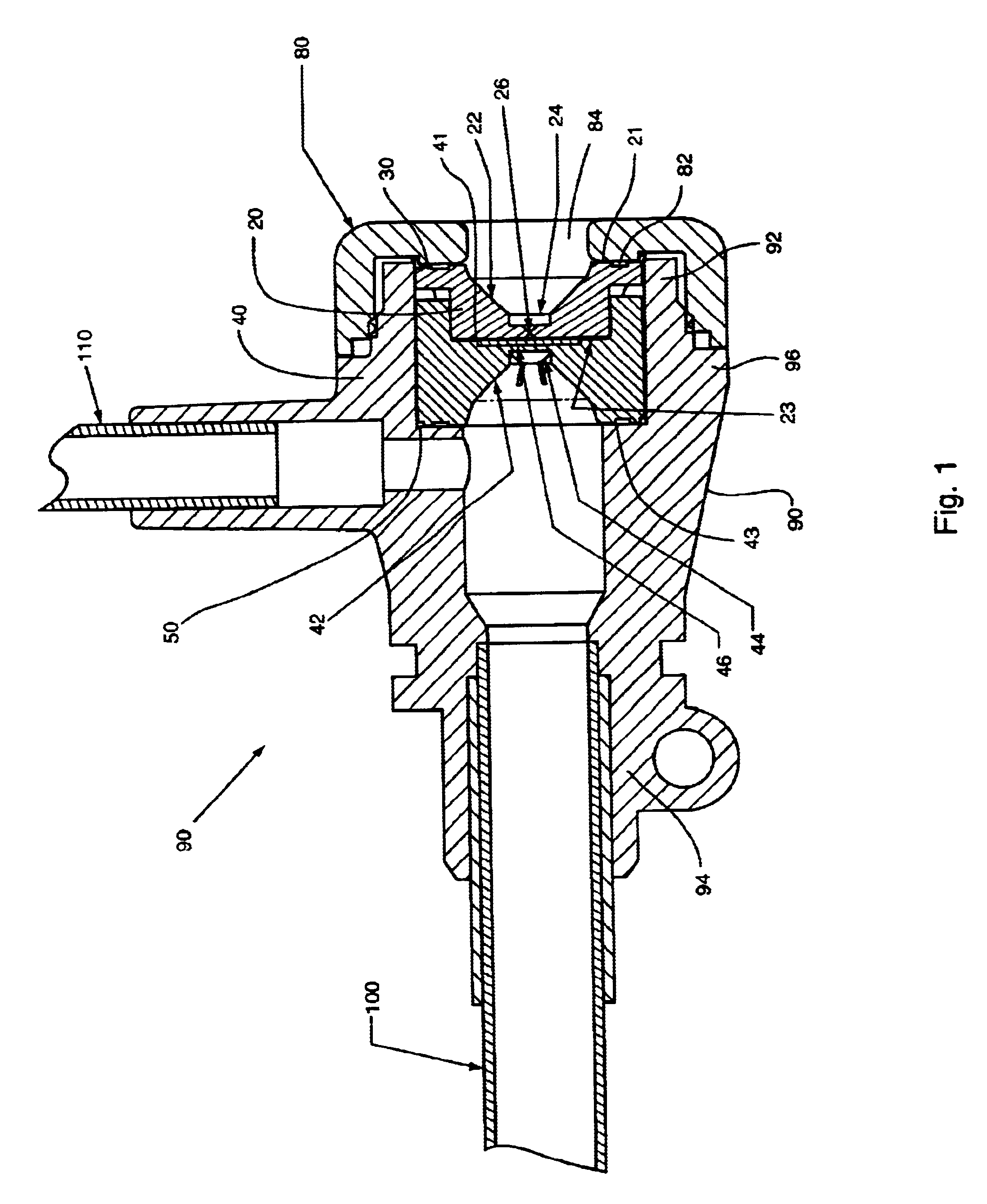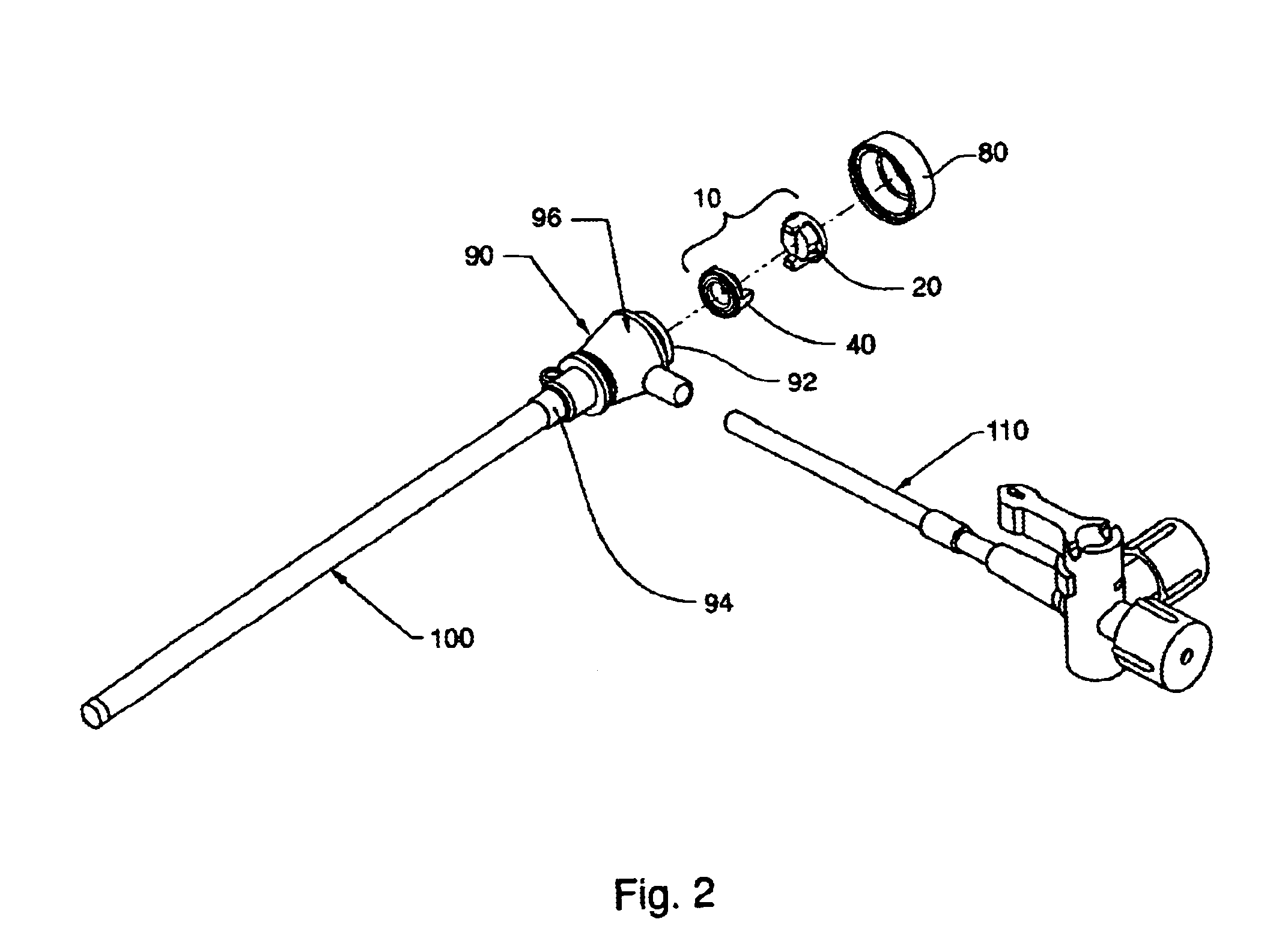Hemostasis valve
a technology of hemostasis valve and valve body, which is applied in the field of medical devices and instruments, can solve the problems of difficult to employ a single type of hemostasis valve, difficult to adequately seal the valve against the backward pressure of blood, and excessive blood leakage,
- Summary
- Abstract
- Description
- Claims
- Application Information
AI Technical Summary
Benefits of technology
Problems solved by technology
Method used
Image
Examples
Embodiment Construction
The high performance hemostasis valve (10) of the present invention is preferably incorporated in a hemostasis cannula assembly (70) as shown in FIGS. 1 and 2, which is used, for example, for various cardiac catheterization procedures in which a dilation catheter or treating catheter advances over a small guidewire into a blood vessel.
The hemostasis cannula assembly (70) is formed of five major components, as shown in FIGS. 1 and 2. The first of these components is the cap (80), which is attached to the proximal end of the second component--the longitudinally extended valve housing or hub (90). The valve housing (90) has proximal and distal opposing openings through which elongated cylindrical medical devices are inserted into and out of the interior of the valve housing or hub (90). The cap (80) and valve housing (90) of the cannula assembly (70) are preferably made from a relatively rigid thermoplastic material, such as a high-density polyethylene or an acrylonitrile-butadiene-sty...
PUM
 Login to View More
Login to View More Abstract
Description
Claims
Application Information
 Login to View More
Login to View More - R&D
- Intellectual Property
- Life Sciences
- Materials
- Tech Scout
- Unparalleled Data Quality
- Higher Quality Content
- 60% Fewer Hallucinations
Browse by: Latest US Patents, China's latest patents, Technical Efficacy Thesaurus, Application Domain, Technology Topic, Popular Technical Reports.
© 2025 PatSnap. All rights reserved.Legal|Privacy policy|Modern Slavery Act Transparency Statement|Sitemap|About US| Contact US: help@patsnap.com



